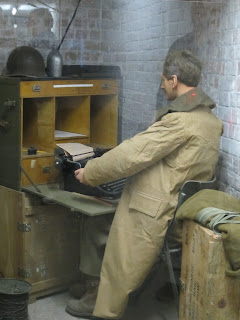PFC Joseph "JK" Barrineau
Private Barrineau was from Andrews, South Carolina and arrived in Normandy, France in early July, 1944 with the 5th Infantry Division. During Operation Cobra, he was involved in heavy fighting against the Germans as the allies pushed to break out of the deadly hedgerows of Normandy. Barrineau was injured in both arms by shrapnel and machine gun fire in Vidouville, France while taking Hill 183. He was moved back to be treated by medics when they noticed something wrong with his helmet. It had a bullet hole in the front and a large exit hole to the rear. The web headband was also torn apart by the bullet. To the surprise of the medics, Barrineau did not have a head injury. He went on to survive the war and later moved to Corbin, Kentucky where he would become a pastor. Barrineau was awarded the Purple Heart.
Yeoman Frederick Leon Ruckert, Jr.
Yeoman Ruckert was from Shreveport, Louisiana and was deployed to the Pacific to fight the Japanese. Ruckert was aboard LST-167 when it was strafed and bombed by Japanese bombers on September 25, 1943. Ruckert was killed by shrapnel as a result of the attack. According the display at the WWII Museum, he was an only child and his battle-damaged helmet was returned to his parents.
Incidentally, the attack on the LST-167 produced the largest loss of life on any U.S. Coast Guard vessel during WWII.






















































